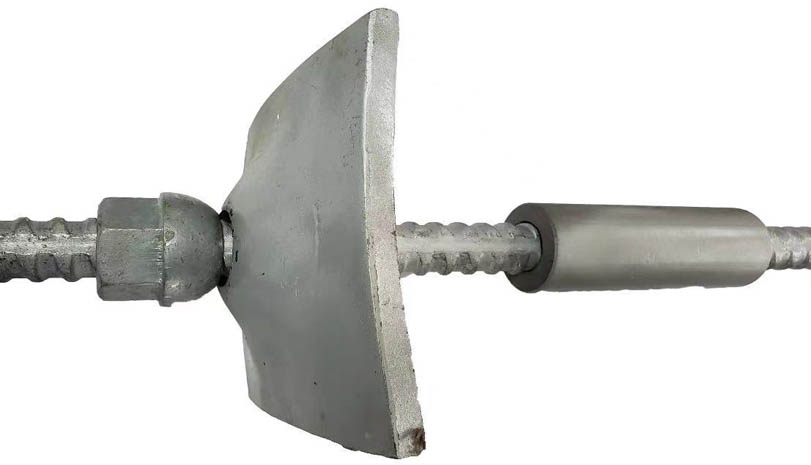Soil Anchor A ground anchor installed in “SOIL” (soft ground).
Rock Anchor A ground anchor installed in “ROCK” (hard ground).
Ground Anchor A ground or earth anchor is an installation in the ground which is capable of transmitting an applied load to a local bearing stratum. The tensile element of a ground anchor is typically a steel bar, FRP bar or strands.
Rock-Bolt A long anchor bolt, for stabilizing rock, which has usually been excavated. Rock bolts are often used in tunnels or rock cuts. They transfer loads from the unstable rock exterior, to the confined and much more stable interior of the rock mass.
Temporary Anchor An anchor with a design life less than two years.
Permanent Anchor An anchor with a design life greater than two years. The design life of “semi-permanent” anchors, should be defined by the consultant, but is usually in the range of five to ten years.
Soil Nail A temporary or permanent, passive anchor, installed into the ground. A typical application is slope stabilization.
Tie-Back An anchor, usually horizontal or nearly horizontal, used to reinforce retaining walls for stability. One end of the tieback is secured to the retaining wall, while the other end is anchored to a stable structure, such as a back-wall or anchored into earth with sufficient resistance (grouted bond length). A tie-down is the same kind of anchor but installed vertically or nearly vertically.
Micropile Also known as minipiles, micropiles are deep foundation elements constructed using highstrength, small-diameter steel casing and/or threaded bars.
